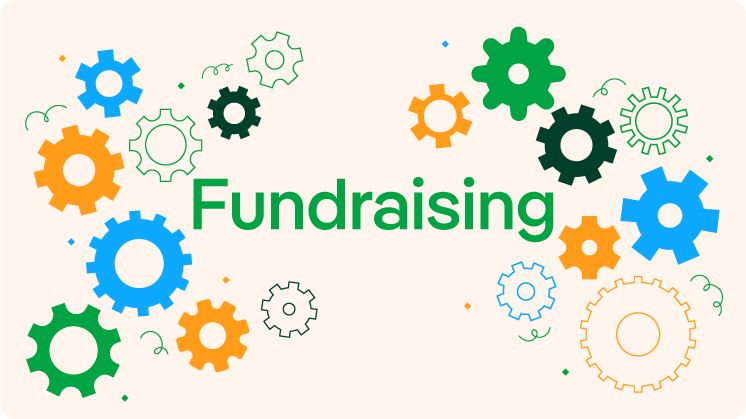Nonprofit Marketing: Just How to Construct a Powerful Brand and Rise Support
Nonprofit Marketing: Just How to Construct a Powerful Brand and Rise Support
Blog Article
The Role of Area Interaction in Nonprofit Fundraising: Building Lasting Relationships for Sustainable Assistance
Area engagement is increasingly acknowledged as an important part of effective nonprofit fundraising. By cultivating real relationships with neighborhood stakeholders, organizations can grow trust fund and commitment, which are vital for lasting support. However, the approaches and approaches used to engage communities differ commonly, elevating essential questions about effectiveness and effect. What are the very best practices for cultivating these vital links, and exactly how can nonprofits gauge their success in this field? Recognizing these characteristics might significantly influence the future of fundraising efforts and the general mission of nonprofit companies.
Comprehending Area Interaction
Area engagement is a vital component of effective not-for-profit fundraising efforts. Nonprofits have to identify essential stakeholders-- such as area members, local businesses, and other organizations-- to develop effective interaction methods.
Effective community engagement is predicated on active listening and responsiveness to the demands and interests of the community. This process involves obtaining comments, comprehending neighborhood dynamics, and guaranteeing that the organization's mission straightens with neighborhood top priorities. Involving the community can take numerous forms, including public conferences, volunteer opportunities, and collaboration efforts, each made to motivate participation and financial investment in the company's objectives.
Furthermore, area involvement must be approached as a recurring dialogue instead than a single initiative. By fostering a comprehensive atmosphere where area voices are listened to and valued, nonprofits can build a solid foundation for future fundraising undertakings. Inevitably, a deep understanding of area engagement equips organizations to produce genuine links that enhance their overall efficiency and sustainability.
Advantages of Solid Relationships
Solid partnerships formed via community engagement yield many advantages for not-for-profit fundraising efforts. Firstly, these partnerships foster depend on and reliability, important components in encouraging donors to add. When possible supporters see a nonprofit actively associated with their area, they are most likely to rely on its objective and influence.

Moreover, these relationships help with reliable interaction. Nonprofits can leverage their links to share stories of influence, updates, and needs, making certain that fans stay enlightened and engaged. This open line of communication not only reinforces bonds however also motivates word-of-mouth promotion, increasing the not-for-profit's reach.
Last but not least, strong neighborhood connections can draw in new partners and enrollers. Services and individuals are extra inclined to align with organizations that show significant neighborhood involvement, offering additional resources and support that can substantially improve fundraising capabilities. Therefore, cultivating robust partnerships through area interaction is important to a nonprofit's long-lasting fundraising success.
Approaches for Effective Interaction
Exactly how can nonprofits effectively involve their neighborhoods to improve fundraising initiatives? Regular updates, involving content, and calls-to-action can galvanize area interest and participation.
2nd, holding area events, such as workshops, volunteer opportunities, or fundraising drives, assists in face-to-face interaction, enabling nonprofits to display their influence and efforts. These occasions not only elevate funds yet likewise cultivate relationships and enable neighborhood participants to involve straight with the reason.
Third, implementing customized communication methods can improve interaction. Tailoring messages to particular benefactor sectors based upon interests and past payments promotes a sense of belonging and investment in the organization's goal.
Last but not least, developing partnerships with regional organizations and area leaders can intensify outreach efforts. Joint initiatives can boost presence and reliability, demonstrating a collective commitment to the community's health. By incorporating these techniques, nonprofits can construct long-term partnerships that improve fundraising efforts and drive sustainable support.
Determining Involvement Success
While involving the neighborhood is vital for effective nonprofit fundraising, determining the efficiency of these engagement initiatives is just as essential. Developing clear metrics allows companies to analyze how well they are connecting with their audience and accomplishing their fundraising goals. Key efficiency signs (KPIs) such as donor retention prices, volunteer engagement degrees, and involvement on social media sites platforms offer concrete data for examination.

Routinely examining these metrics makes it possible for organizations to check my source pivot their techniques when needed, ensuring that neighborhood engagement continues to be aligned with their general objective. In addition, sharing these results with stakeholders fosters transparency and develops trust fund, encouraging additional community involvement. Ultimately, a robust dimension structure not only informs future fundraising about his efforts yet additionally enhances the relationship between the nonprofit and its advocates, preparing for lasting success.
Case Studies in Community Effect
Numerous case researches illustrate the profound effect that community involvement can carry not-for-profit fundraising success. One noteworthy example is the "Something to chew on" campaign, where a regional food bank partnered with schools and organizations to host community dinners. These events not only increased funds yet additionally cultivated a feeling of belonging amongst individuals, substantially raising donor retention prices.
Another compelling instance is the "Green Spaces Task," which included regional citizens in the revitalization of city parks. This campaign not only garnered financial backing from regional services but additionally cultivated a volunteer base that added to continuous maintenance and programs. The feeling of possession and satisfaction among community members converted right into sustained payments.
In the world of arts, the "Art for All" campaign successfully involved regional artists and customers to produce collaborative art installments, causing boosted presence and contributions for a neighborhood arts nonprofit.
These examples highlight that when nonprofits focus on community participation, they can produce enduring partnerships that boost fundraising efforts, guaranteeing sustainable assistance and promoting a dynamic neighborhood society. Such situations show that area involvement is not simply a method but a crucial column of nonprofit success.
Verdict
Finally, neighborhood engagement is indispensable to the success of not-for-profit fundraising efforts. By promoting solid relationships with regional stakeholders, organizations boost trust fund and reliability, click for info causing improved contributor retention and loyalty. Implementing efficient involvement strategies and gauging their effect ensures that nonprofits can adjust and grow. Inevitably, a durable foundation of neighborhood support not just enhances fundraising potential however also grows a culture of partnership, essential for accomplishing long-term business goals and sustaining purposeful influence.
Nonprofits need to identify essential stakeholders-- such as area members, neighborhood organizations, and other organizations-- to create reliable interaction techniques.

In conclusion, area engagement is important to the success of nonprofit fundraising initiatives.
Report this page